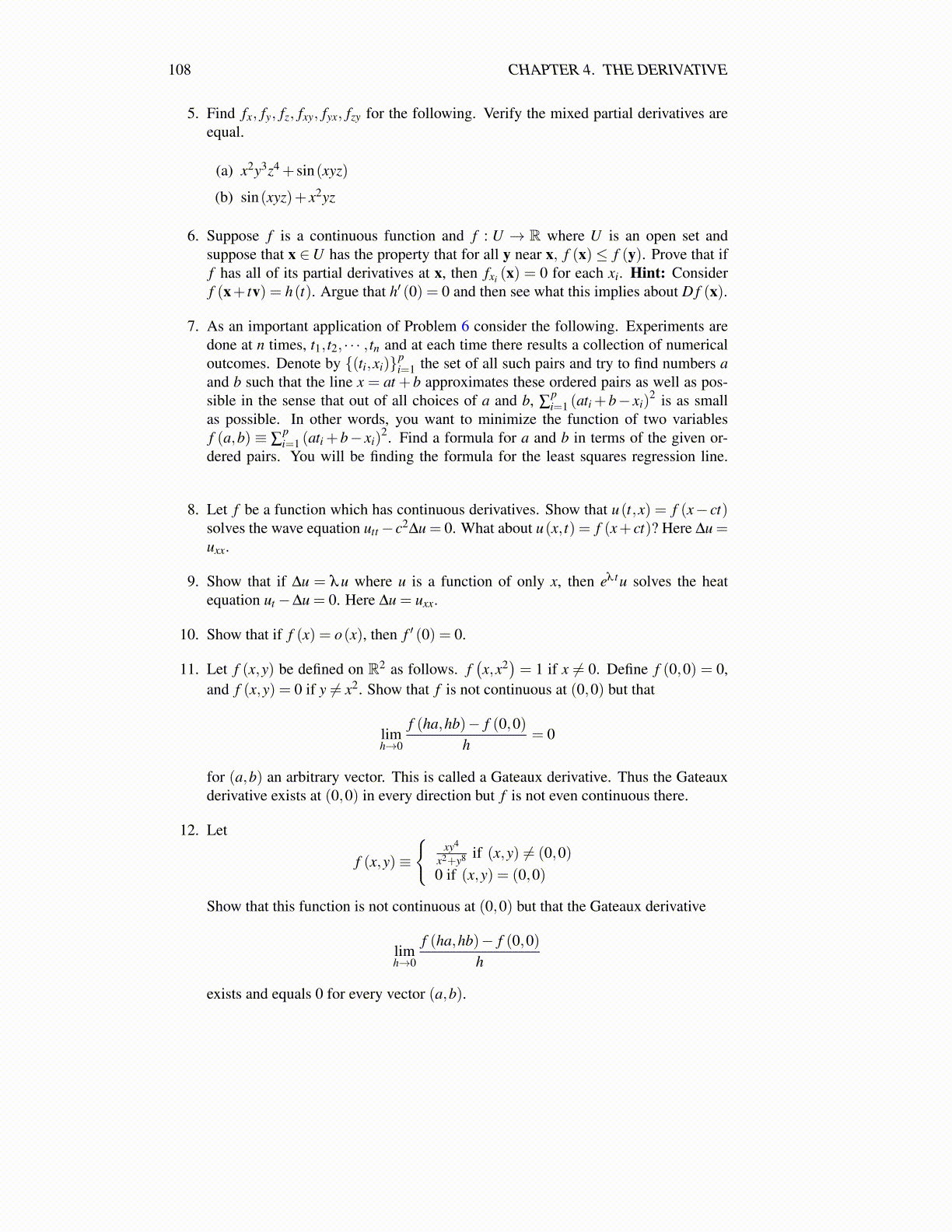
108 CHAPTER 4. THE DERIVATIVE
5. Find fx, fy, fz, fxy, fyx, fzy for the following. Verify the mixed partial derivatives areequal.
(a) x2y3z4 + sin(xyz)
(b) sin(xyz)+ x2yz
6. Suppose f is a continuous function and f : U → R where U is an open set andsuppose that x ∈U has the property that for all y near x, f (x)≤ f (y). Prove that iff has all of its partial derivatives at x, then fxi (x) = 0 for each xi. Hint: Considerf (x+ tv) = h(t). Argue that h′ (0) = 0 and then see what this implies about D f (x).
7. As an important application of Problem 6 consider the following. Experiments aredone at n times, t1, t2, · · · , tn and at each time there results a collection of numericaloutcomes. Denote by {(ti,xi)}p
i=1 the set of all such pairs and try to find numbers aand b such that the line x = at + b approximates these ordered pairs as well as pos-sible in the sense that out of all choices of a and b, ∑
pi=1 (ati +b− xi)
2 is as smallas possible. In other words, you want to minimize the function of two variablesf (a,b) ≡ ∑
pi=1 (ati +b− xi)
2. Find a formula for a and b in terms of the given or-dered pairs. You will be finding the formula for the least squares regression line.
8. Let f be a function which has continuous derivatives. Show that u(t,x) = f (x− ct)solves the wave equation utt−c2∆u = 0. What about u(x, t) = f (x+ ct)? Here ∆u =uxx.
9. Show that if ∆u = λu where u is a function of only x, then eλ tu solves the heatequation ut −∆u = 0. Here ∆u = uxx.
10. Show that if f (x) = o(x), then f ′ (0) = 0.
11. Let f (x,y) be defined on R2 as follows. f(x,x2
)= 1 if x ̸= 0. Define f (0,0) = 0,
and f (x,y) = 0 if y ̸= x2. Show that f is not continuous at (0,0) but that
limh→0
f (ha,hb)− f (0,0)h
= 0
for (a,b) an arbitrary vector. This is called a Gateaux derivative. Thus the Gateauxderivative exists at (0,0) in every direction but f is not even continuous there.
12. Let
f (x,y)≡
{xy4
x2+y8 if (x,y) ̸= (0,0)0 if (x,y) = (0,0)
Show that this function is not continuous at (0,0) but that the Gateaux derivative
limh→0
f (ha,hb)− f (0,0)h
exists and equals 0 for every vector (a,b).